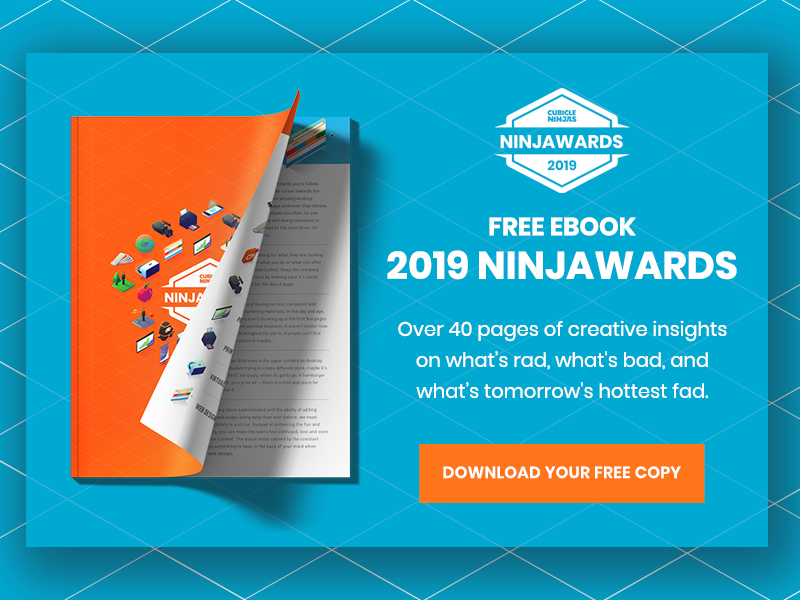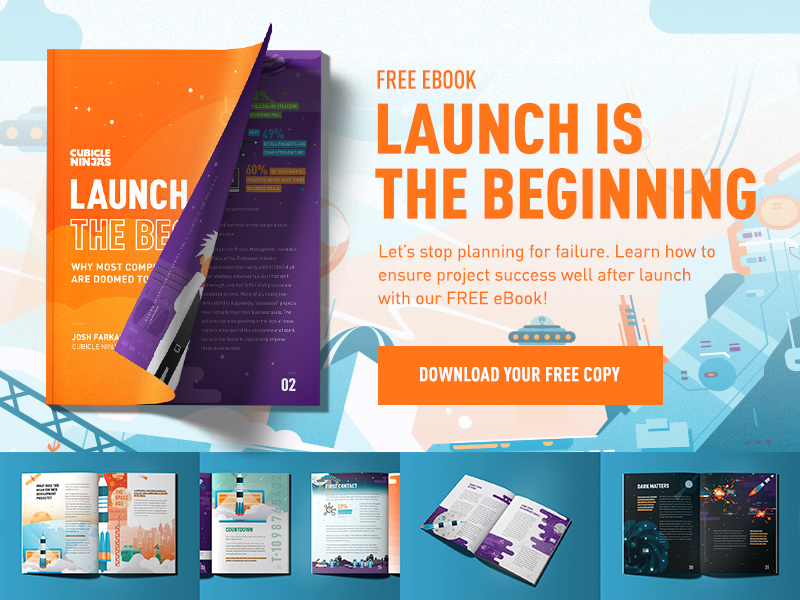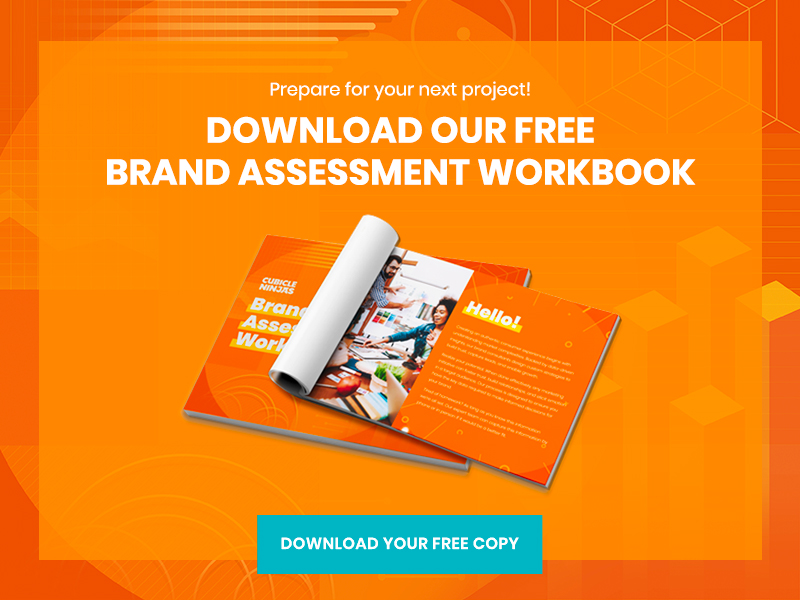
So you get to present to the big shots. Congratulations are in order — so, congrats! You’re probably feeling a mixture of excitement and nervous energy right now. After all, the stakes are pretty high! We’re not trying to scare you — we just want you to realize how big an opportunity this is, in hopes of you digging in your heels to succeed at your executive presentation. It’s going to take strategy, confidence, and knowledge to get this right. Luckily, you’ll be well prepared if you read our top tips for an executive presentation below.
5 Ways to Wow With Executive Presentations
1. Know Your Audience
You might have seen this one coming. If you’ve got your Marketing Lead in the room, make sure you’re speaking to their area of expertise and showing them value specific to their role. If you’ve got a CEO in the room, it’s the same deal: tailor your messaging! If you have both a Marketing Lead and a CEO in the same presentation, you need to find a message that appeals to both parties without being too broad.
A good place to start with audience research is determining their level of existing knowledge about your topic. Will it be necessary for you to explain industry acronyms? Do you need to provide background information or are they already familiar with that? Are your ideas particularly provoking or threatening to any specific executives? On the latter point, be sure to sell extra hard to those who might be hostile to your suggestion. They will need some extra TLC (and evidence to boot) to get them on the same page as the rest of the room.
Here’s a pro tip: executives love it when you speak their language. If your CEO is big on using the word “innovation”, then try to incorporate that term into your presentation. It will demonstrate that you’ve done your homework, are committed to the vision of the company, and that you’re on the same team.
2. Cut the Nonsense
Keep your content short and sweet, or else the executives might pounce for details and interrupt you in the middle of your lead-up. Honestly, ditch any lead up. Dive right in to your content. Odds are, your executives don’t have a lot of time and they care more about asking questions than hearing a big wind-up to get to the meat of your executive presentation.
The moral of the story: give the people what they came for! You were invited to speak for a reason: you have specific information that they need. So, address their needs first. If there’s something else that you wanted to bring up that’s outside the realm of what you were specifically asked for, save it for last, or for another presentation entirely.
An excellent way of keeping your content concise (and assuring your audience that you’ve done so) is having a summary slide at the beginning of your presentation. A summary slide generally uses the 10% rule: if you have 30 slides, have 3 key points. These points are intended to be broad, but include key knowledge. Think about establishing a clear direction for your presentation, as well as what your desired outcome will be. Executives can be impatient, so subtly letting them know that their concerns will be attended to can help curb the number of interruptions you receive.
3. Get to the Point
Again, executives are chronically short on time. Context is nice to have. Last year’s performance is nice to have. Your idea? Now that’s need to have. Limit your material to the need to have items on your list before adding any fluff.
Here’s a formula for success: state your idea, then explain what’s needed from them to move forward. Next, provide supporting points and evidence until someone interrupts you with a question. Ideally, always leave at least 15 minutes for discussion purposes. So, if you’re only booked for half an hour, your presentation should be a maximum of 15 minutes. If you manage to get through all your material and there’s no questions, you just gave the executives the greatest gift of all: extra time. That’s a sure-fire way to get invited back!
We recommend practicing this tip out loud. It’s harder than you think to keep your thoughts succinct, especially when you’re the expert on the material. Try to plan out a logical sequence of ideas to keep yourself on track. If you find yourself wandering, you can always revert back to your content map to re-align.
4. Anticipate Interruptions
This is yet another reason why leaving 15 minutes for questions is important. Sometimes, executives can be blunt and straight to the point. They won’t always wait for question period — they need answers now! This 15 minute buffer means that you can address their concerns without having to worry about time — even if your presentation has to take a 5 minute detour to address someone’s question, you can feel comforted by knowing that there’s still 10 minutes remaining at the end for other questions.
Also, don’t get intimidated. If you’re getting pelted with questions, this shows engagement with the material — that’s a good thing! Remember that it’s okay to be flexible with your presentation, as you can back track, skip forward, and skip slides entirely to suit the needs of the executives. While this might be a major event in your life, this presentation is ultimately about their needs. Go with the flow and lean into interruptions.
5. Prepare Every Possible Response
You’re planning for content here, but also, this does wonders for your confidence. And trust us, you need to be perceived as confident if you want executives to buy into your idea.
Plan out all the expected questions, then, begin to plan the “curveball” questions. You know, the ones that would make you break out in a cold sweat and give you a distinct deer in the headlights kind of look if posed by an executive. By identifying the scariest questions in advance, we can prevent that kind of reaction.
You also need to have all of your supporting data at the ready. You can be challenged on any one of your ideas, opinions, or claims — be sure you have the evidence ready to back it up. Executives live for logic, so they will poke holes as they see them. If you can’t verify data in a way that meets the standards for an executive presentation, don’t include it in your presentation. Your audience is composed of experts, so they will notice.
A good idea is to include appendix slides that include your various data points and references. If you get challenged on something that requires concrete evidence to back up, it’s useful to have it at your fingertips. This is great for showing off your organization and preparation skills, which in turn helps you to gain trust from the executives.
If you’re really stressed about the presentation and you’re not 100% sure that you’ve anticipated every question, you need to take it to the next level. That’s right, you need to compile a small team of trusted coworkers and rehearse with them. Try to get people that have pitched to executives before. Ask them to provide honest feedback and ask the hard questions. Their new perspectives may identify a question you never thought of, but are glad you heard it from a friend before the executive table asked it of you.
To make this exercise even more realistic, ask a coworker to purposefully ask questions during your rehearsal. This will help you to become accustomed to being pelted with questions at inopportune moments, and also learn how not to take the interruptions personally.
No matter how you slice it, it takes guts to present to an executive table. However, it’s no doubt that executive presentations are one of the most effective ways to work on your career development, make key industry connections, and develop your reputation. Armed with our best tips for a successful executive presentation, you won’t regret giving this your all. Who knows what kinds of magical opportunities might come out of it! What “way to wow” will you be incorporating into your executive presentation? Let us know in the comments!
Need More Presentation Insights?
Check out 16 Strategies Used by Pitch Deck Designers. Looking for more help to bring your presentation to the next level? Get in touch with one of our ninjas today!



















